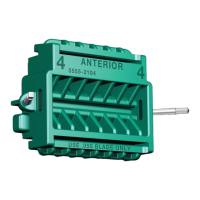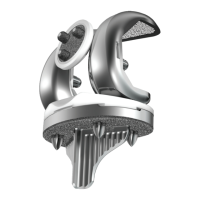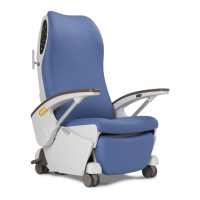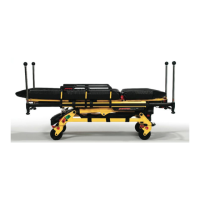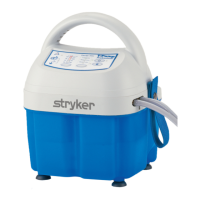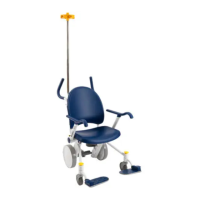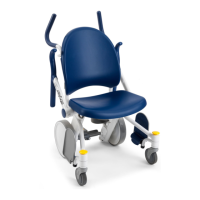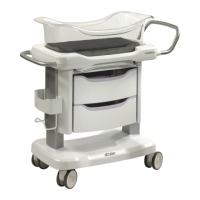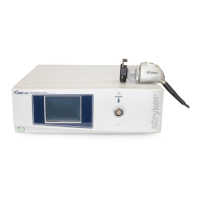Do you have a question about the Stryker Triathlon Knee System and is the answer not in the manual?
Focus on increasing accuracy and simplicity of surgical procedures.
Features enabling adaptation to various surgical realities and preferences.
Incorporation of ergonomic principles for improved instrument design.
Assembly of guides for femoral alignment and distal resection.
Assembly of alignment handle, resection guide, and alignment rod.
Assembly of sizer, stylus, and modular handle for femoral preparation.
Assembly of cutting block, handle, strike plate, and capture.
Assembly of impactor, handle, and trial/component.
Comprehensive assembly of tibial alignment system components.
Assembly of tibial template, handle, and insert trial.
Assembly of tibial template with keel punch guide.
Assembly of patella clamp, stylus, and jaws for patella preparation.
Assembly of hex drive, torque handle, and fixation pegs.
Procedure for achieving intramedullary alignment of the femur.
Technique for performing the distal femoral bone resection.
Method for determining the correct size of the femoral component.
Performing anterior, posterior, and chamfer bone resections on the femur.
Procedure for preparing the distal femur for a PS component box.
Evaluating the fit and alignment of the femoral trial components.
Tibial preparation using extramedullary alignment methods.
Tibial preparation using intramedullary alignment methods.
Determining and setting the level for the tibial bone resection.
Performing the tibial bone resection.
Assessing and managing flexion and extension joint gaps.
Selecting the appropriate size for the tibial component.
Evaluating the fit and alignment of the tibial trial components.
Creating the keel slot for the tibial component.
Patella preparation using the bone removing technique.
Patella preparation using the bone remaining technique.
Implantation of the cemented or cementless femoral component.
Implantation of the cemented or cementless tibial baseplate.
Implantation of the PS or CR tibial insert.
Implantation of patella components.
Conditions for which the total knee arthroplasty is indicated.
Conditions where the total knee arthroplasty is not recommended.
Potential negative outcomes and complications of knee replacement.
Information to discuss with patients regarding the procedure and device.
Focus on increasing accuracy and simplicity of surgical procedures.
Features enabling adaptation to various surgical realities and preferences.
Incorporation of ergonomic principles for improved instrument design.
Assembly of guides for femoral alignment and distal resection.
Assembly of alignment handle, resection guide, and alignment rod.
Assembly of sizer, stylus, and modular handle for femoral preparation.
Assembly of cutting block, handle, strike plate, and capture.
Assembly of impactor, handle, and trial/component.
Comprehensive assembly of tibial alignment system components.
Assembly of tibial template, handle, and insert trial.
Assembly of tibial template with keel punch guide.
Assembly of patella clamp, stylus, and jaws for patella preparation.
Assembly of hex drive, torque handle, and fixation pegs.
Procedure for achieving intramedullary alignment of the femur.
Technique for performing the distal femoral bone resection.
Method for determining the correct size of the femoral component.
Performing anterior, posterior, and chamfer bone resections on the femur.
Procedure for preparing the distal femur for a PS component box.
Evaluating the fit and alignment of the femoral trial components.
Tibial preparation using extramedullary alignment methods.
Tibial preparation using intramedullary alignment methods.
Determining and setting the level for the tibial bone resection.
Performing the tibial bone resection.
Assessing and managing flexion and extension joint gaps.
Selecting the appropriate size for the tibial component.
Evaluating the fit and alignment of the tibial trial components.
Creating the keel slot for the tibial component.
Patella preparation using the bone removing technique.
Patella preparation using the bone remaining technique.
Implantation of the cemented or cementless femoral component.
Implantation of the cemented or cementless tibial baseplate.
Implantation of the PS or CR tibial insert.
Implantation of patella components.
Conditions for which the total knee arthroplasty is indicated.
Conditions where the total knee arthroplasty is not recommended.
Potential negative outcomes and complications of knee replacement.
Information to discuss with patients regarding the procedure and device.
| Category | Medical Equipment |
|---|---|
| Type | Knee Replacement System |
| Manufacturer | Stryker |
| Cemented/Cementless | Both Options Available |
| Implant Fixation | Cemented or Cementless |
| Product Type | Total Knee Arthroplasty System |
| Material | Cobalt-Chrome alloy, Polyethylene |
| Indication | Osteoarthritis, Rheumatoid Arthritis |
| Sizes Available | Multiple sizes available |
| Patellar Component | Polyethylene |
| Surgical Technique | Minimally Invasive Techniques Available |
| Patellar Option | Resurfacing or non-resurfacing |
| Weight Limit | Varies by Patient's Condition |
